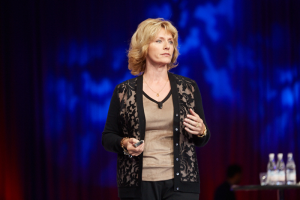
How is it that some companies can come up with a big idea and implement that idea successfully in the market, while others never get past the idea phase?
"In the case of innovation," says Jill Dyché, VP of SAS Best Practices, "big ideas aren't enough."
It's also not enough to just "put some smart guys together in a room," says Dyché. What is enough? Innovation needs to be purposeful, collaborative and supported by the culture in your organization.
To accomplish innovation, she recommends an innovation lab, a physical space that centralizes big thinking and deployment of innovation, and isolates innovation from the rest of the organization.
The pros to this kind of setup? It consolidates data and human resources around innovation and puts formal processes around innovation.
The cons? It can lead to an elitist attitude about innovation. But you can avoid this if you remain open and keep others involved in the process.
Learn more beyond the pros and cons of innovation labs from Dyché in the 15-minute video, recorded in April at the SAS Global Forum Executive Conference. She goes into detail about a data discovery project that revealed similarities in purchase behavior between two very different types of customers. And if you watch through to the end, you'll learn how analytics plays a roll in each phase of the innovation lifecycle.
To get more great insights into business, innovation and data, order Jill's latest book, The New IT.

